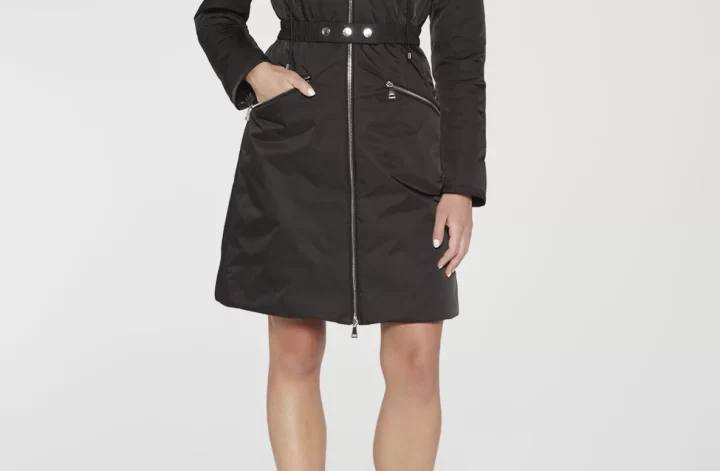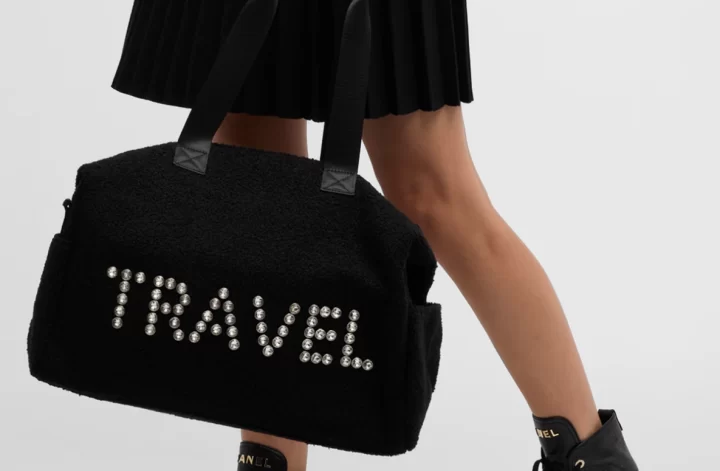Sometimes we get bad advice. And sometimes it’s from the fashion industry. It’s always held a powerful influence over our style choices, dictating what’s trendy and what’s not.
But how often do we stop and question the advice we receive? In this blog post, I’m going to call out some of the common lies perpetuated by the fashion industry. I hope this helps you to stay true to your personal style and tune out the industry noise.
“Black goes with everything.”
As a personal stylist, I’ve heard this phrase uttered by clients many times. Contrary to popular belief, black does not, in fact, go with everything. While it may be considered a staple in many wardrobes, it’s important to note that it doesn’t suit everyone. Not only can black be unflattering on certain skin tones, but it doesn’t photograph well either. Often pairing black shoes or a black bag with a boldly colored outfit or a bohemian sundress instantly ruins the look. I encourage you to explore a broader palette that complements your unique features and offers you a more versatile wardrobe.
“You can get it tailored.”
Tailoring can work wonders in enhancing the fit and look of a garment, but there are limitations. If an item requires excessive tailoring, it’s usually best to skip it altogether. For example, if a waistband needs to be taken in more than 2” it usually destroys the original shape of the garment. It’s essential to strike a balance between seeking tailored perfection and acknowledging when a piece simply doesn’t suit our body shape or style preferences.
“White sneakers can be worn with anything.”
While white sneakers have gained immense popularity in recent years, they aren’t as universally compatible as we’ve been led to believe. You can pair them with short dresses, light-wash cropped jeans, joggers, denim shorts, or athletic pants. However, it’s important to recognize that their versatility has limits. They can look unflattering with longer dresses, or even silly when paired with more formal clothing. You’ll also notice you may feel frumpy if you attempt to wear them with dark-wash denim. Some outfits cry for ankle boots or strappy metallic sandals. Putting on a pair of white sneakers would be a shame. Embracing other footwear options can add depth and variety to our outfits. Of course, the right shoe also makes your outfits more flattering.
“Mix pieces from different categories to make your outfit interesting.”
While mixing and matching different fashion categories can create visually appealing outfits, it’s not a trick that anyone can pull off. The idea of wearing running shoes with a maxi dress, an athletic jacket with jeans, or gym leggings as tights under a sweater dress may seem fashionable. But it can leave others feeling frumpy or out of place. It’s crucial to understand our personal style and what works best for us. In my case, I prefer to pair fabrics of similar weight together.
“It’s worth splurging if it’s an investment piece.”
The notion of investment pieces can often lead us astray. It’s true that certain high-end designer items may hold some resale value, on sites like Fashionphile. However, the majority of clothing depreciates in value over time, much like cars. Instead of focusing solely on the price tag, we should prioritize whether an item truly resonates with us and aligns with our style and preferences.
“Luxury brands are expensive because they are better quality.”
Price doesn’t always equate to quality, and this is particularly true in the fashion industry. It’s entirely possible to find reasonably priced pieces that boast longevity and durability. That said, I will note it’s becoming increasingly difficult to find quality garments for less than $200.
However, sometimes even higher-priced items can disappoint in terms of quality. Personally, I’ve had a $30 dress from Target last six years and a $350 pair of pants disintegrate in six months. Instead of trusting labels blindly, it’s important to assess the garment’s quality, fabric content, and construction to ensure we get the most out of our fashion choices.
“You should always dress to compliment your body type.”
While understanding our body type can guide us in making flattering choices, it’s not an unbreakable rule. Just like wearing makeup, sometimes we want to prioritize comfort or embrace something that might not be conventionally attractive but makes us feel fabulous. Fashion should empower us to express our individuality, even if it means deviating from traditional guidelines.
“You can’t wear certain items after a certain age.”
In the same vein, age should never be a limiting factor when it comes to fashion choices. The idea that miniskirts or crop tops are off-limits after a particular age is arbitrary and restrictive. Fashion has no age limit. Just try telling JLO she can’t wear a crop top, I dare you! Let’s break free from society’s expectations and dress in a way that reflects our true selves.
“You must follow trends.”
Trends come and go, but personal style is timeless. Falling prey to every passing trend can make us feel like we’re constantly chasing after something elusive. Instead, we should embrace trends that genuinely resonate with our personal taste and discard the notion that we must conform to every fleeting fashion craze. True style emerges when we curate a wardrobe that reflects our individuality, preferences, and values.
Conclusion
It’s crucial to remember that fashion should be a form of self-expression rather than a set of rigid rules. By challenging these misconceptions and embracing our individuality, we can create a truly personal style. I encourage you to build a wardrobe that empowers you and reflects your personality. As a personal stylist, I want you to ignore that bad advice and find fashion on your own terms.




